Not trivial, but maybe essential.

Scottsdale, AZ temperatures.
The problem with this graph is that it’s incorrect. The last three years’ summer highs have been 115-122F, and while we have negligible humidity, 115F without a/c would see Phoenix and Scottsdale at 1900 population levels.
I have been grumbling about how unusable the garage is, for this committed mechanic, in the summer months. 5 years of complaining is enough. Temperatures soar up to 125F, rubber parts rot, batteries die (I wonder how many AZ Tesla buyers have contemplated replacement of their $10,000 batteries after 5 years?) and you enter the garage space at your peril.
There are two kinds of people in this world – those who only see problems and those who conjour solutions. My a/c maintenance guy belongs to the former population judging by his answer to my request for a quote to add a/c to the garage. A litany of “no can dos” only taught me two things. I need a new a/c guy and this is not nuclear physics.
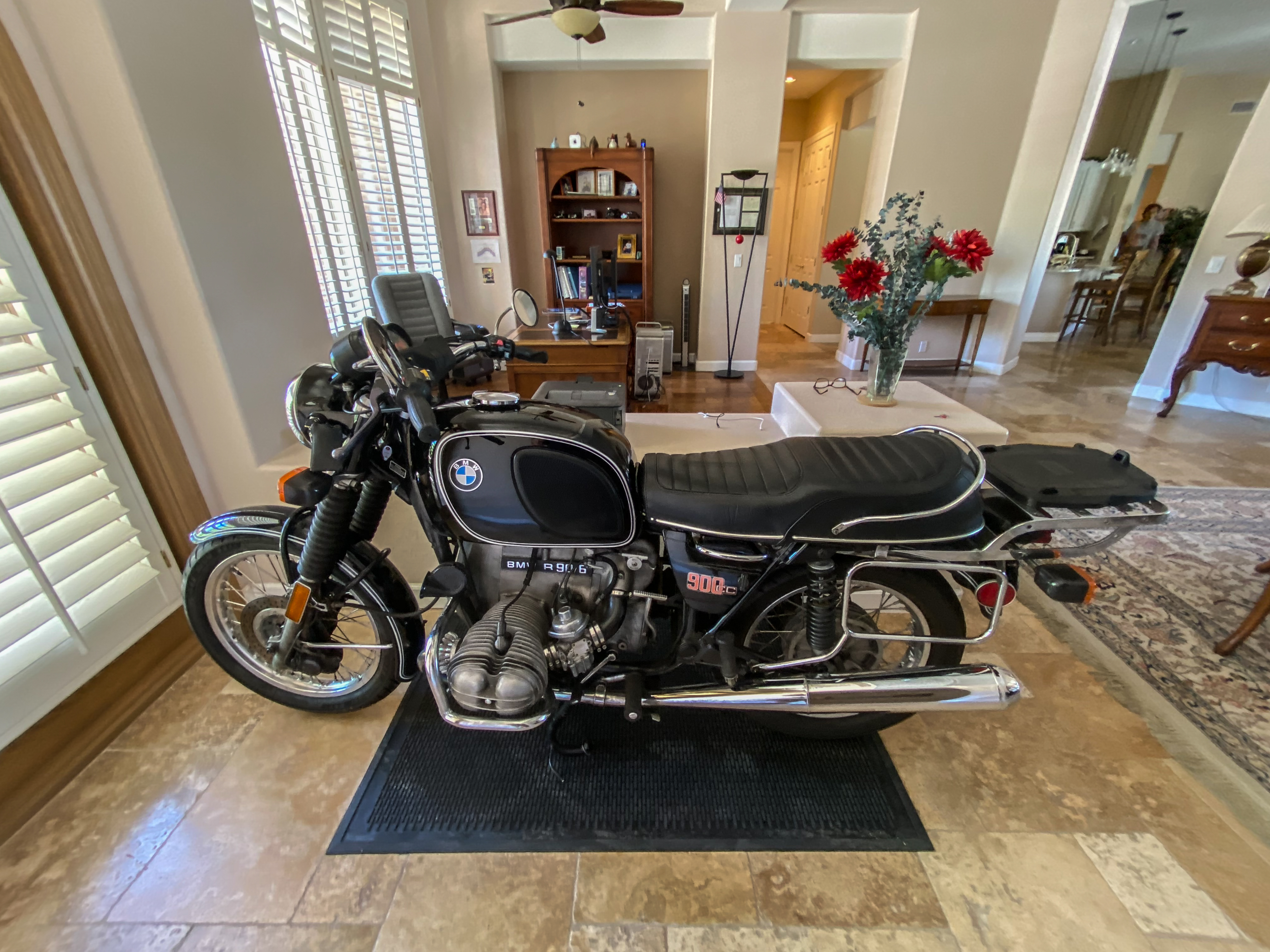
My 1975 BMW ‘Airhead’ was formerly stored in the home
to save it from premature heat death in the summer garage.
So I researched the matter the way any good, numerate, engineer would and identified the following issues:
- Air conditioning hardware. A ducted system is a not an option. High cost, lots of messy construction work. A ductless one, which splits the compressor (outside) from the evaporator (inside) is the answer. Run power, freon and condensate drain hoses through a 3″ hole in the wall and construction is done. Integrated wall units and portable devices have insufficient cooling capacity for my setting.
- Attic insulation. In the good ol’ American Way, meaning chintz on cost wherever you can in pursuit of the sacred God of profit, the attic was completely uninsulated. A major source of heat. This will have to be insulated.
- Door insulation. There are two garage doors, a double and a single, aggregating some 216 sq. ft. of radiating area. While the doors face north, a good thing, the inside temperature of the un-insulated doors is equal to or greater than the ambient temperature outside, meaning 216 sq. ft. of heat radiator in the summer months. The doors require insulation.
- Wall insulation. The south interior garage wall is part of the home so it is insulated, as code requires. But the east and west walls are un-insulated, hurting energy efficiency, but these are a relatively small part of the problem, so I am deferring insulation considerations until more data are to hand.
The air conditioner:
At the quality end of the spectrum three manufacturers dominate – Mitsubishi, Fujitsu and Daikin. All come with long warranties and all claim to be made in Japan …. which means they are probably made in China. They use R410a freon, the version which claims to slow global warming from emissions. Uh huh. And I also have a bridge in Brooklyn for sale, if you are interested.
My garage is 20′ x 36′ x 9′ high, and the typical recommendation is 0.0035 tons/sq.ft., meaning a 720 sq.ft. garage requires a 2.5 ton a/c unit. (2.5 tons = 30,000 BTU). Quite why square footage rather than volumetric data are used beats me, but that’s what everyone seems to do. For a small incremental cost of $700 I went with 3 tons (36,000 BTUs).
A ductless system keeps the compressor outside, with feed (liquid) and return (gas) rubber hoses to the internal evaporator unit, along with a 230v power cable and a drip tube to route the condensate to the outside. Scottsdale summers are fairly dry, but you still want any condensate outside, not on your garage floor.
I got a vast range of estimates on a 3 ton system, covering an installed price range of over 2:1. My final installed price, including the electrical work (230v 30 amps to the compressor, then 230v from compressor to evaporator) was $5,600 for a Daikin unit (RX36NMVJU/FTX36NVJU) which also includes a heater for the winter months. That includes 10 year parts and 10 year labor warranties, which may well be worth yesterday’s discarded cheese sandwich. I elected not to pay the $2,000 premium for a Mitsubishi unit, the claimed increase in efficiency taking some decades to recover in terms of energy costs. The Daikin can be purchased for $3,000 but you will lose the 10 year warranty which comes with installation by an authorized reseller. So that means I paid $2,600 for the 14 hours (2 men, 7hrs each) to install the unit and run 230v power. As the electrical work alone was separately quoted at $1,000 by another proponent, the labor rate for the a/c work comes to $114/hr, which includes the tools and expertise of the installers. I think that’s a decent price.
In addition to air conditioning the unit also includes 36,000 BTUs of heating, though that is not a major need in southern Arizona winters. We get snow twice a century here ….
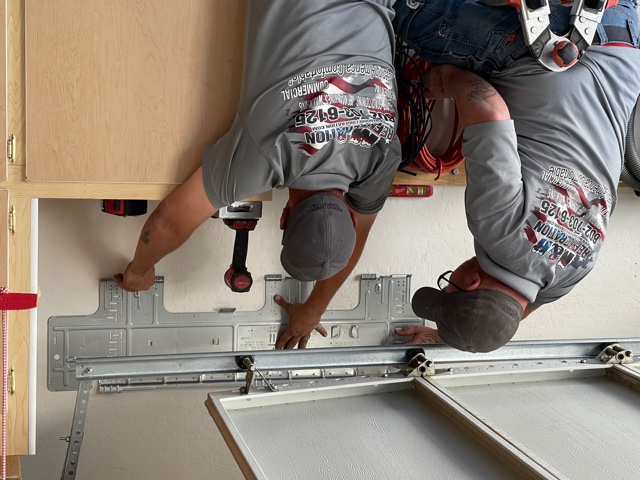
The retaining plate for the evaporator goes in.
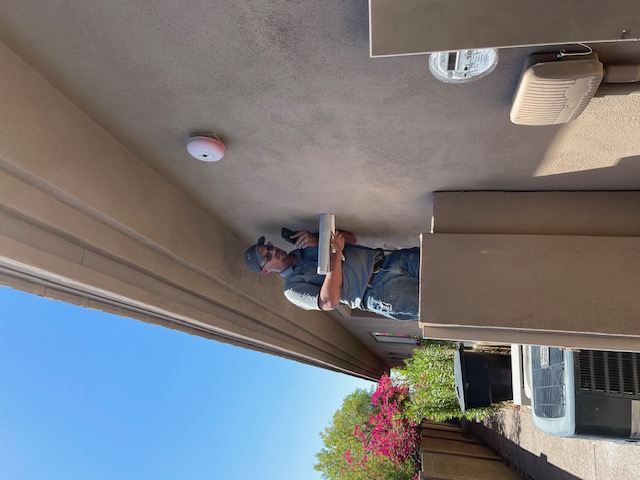
A 3″ hole is drilled though the wall for the freon hoses, the drip hose and the power supply.
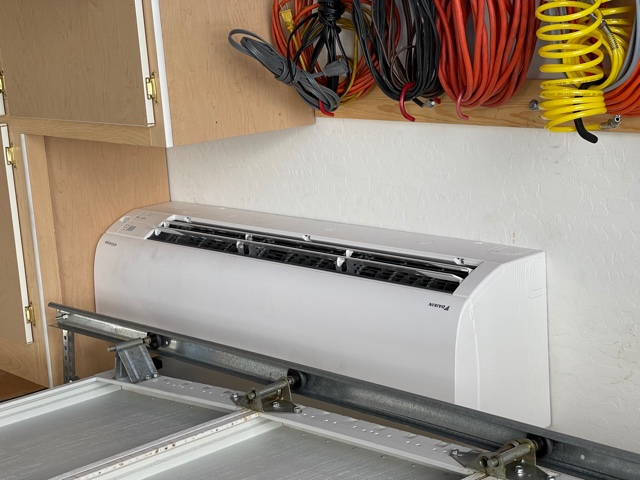
The installed evaporator/heater.
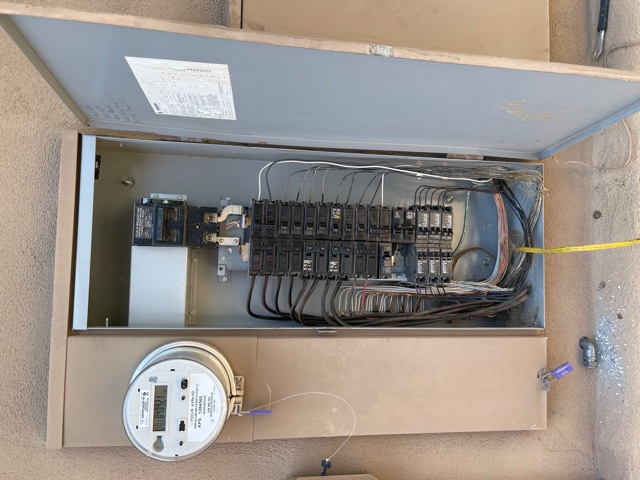
A 230 volt, 30 amp breaker is added to the breaker panel, the power
being routed in steel tube conduit as required by code.
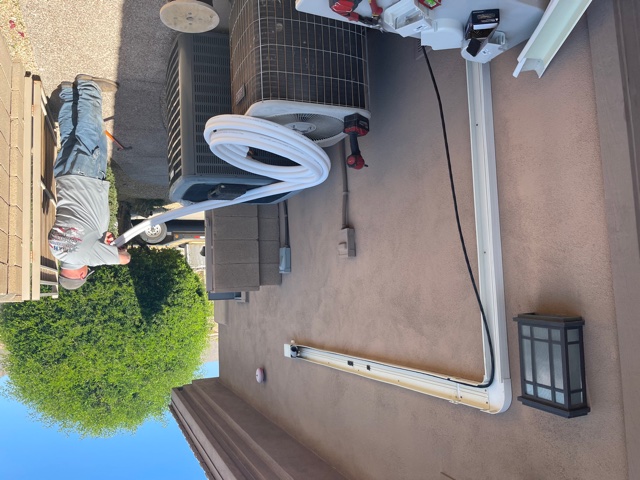
The casing will hold the hoses, drip tube and power cable.
The slight slope of the upper casing is required by the drip tube.
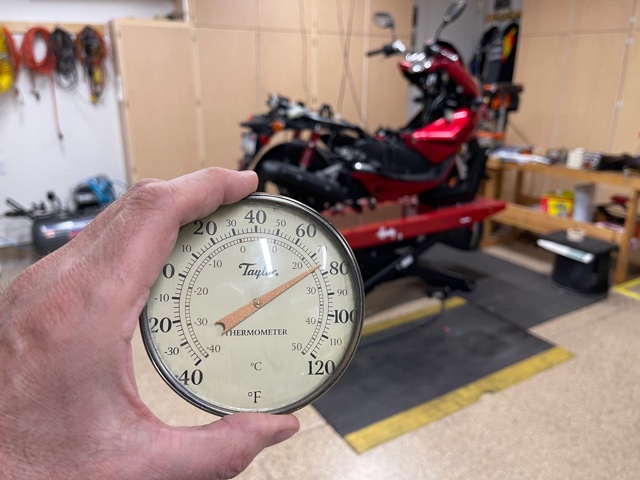
Even with uninsulated doors and attic, 91F outside is easily constrained to 76F inside.
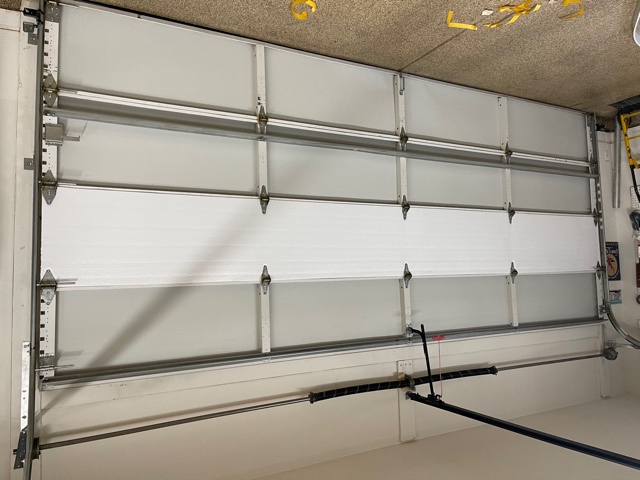
Garage door insulation commences. All hardware must be removed for a proper job.
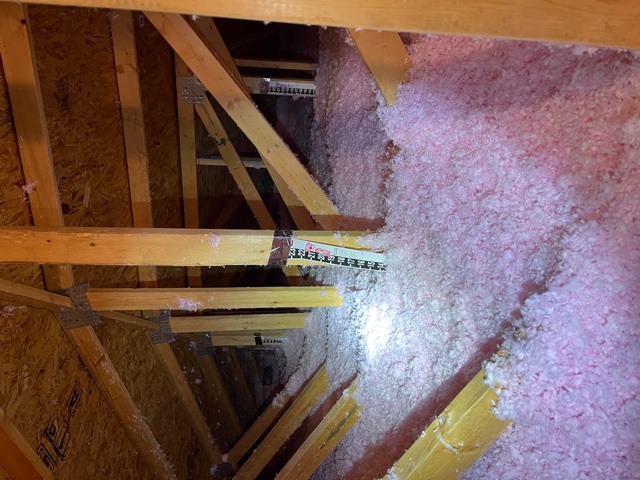
14.5″ of Owens-Corning fiberglass insulation is sprayed into the
uninsulated attic, for an R38 insulation rating. The installed cost was $1,167.
You can pay less to ‘mom and pop’ and get ripped off. If the installer
does not use rulers to confirm insulation depth, go elsewhere.
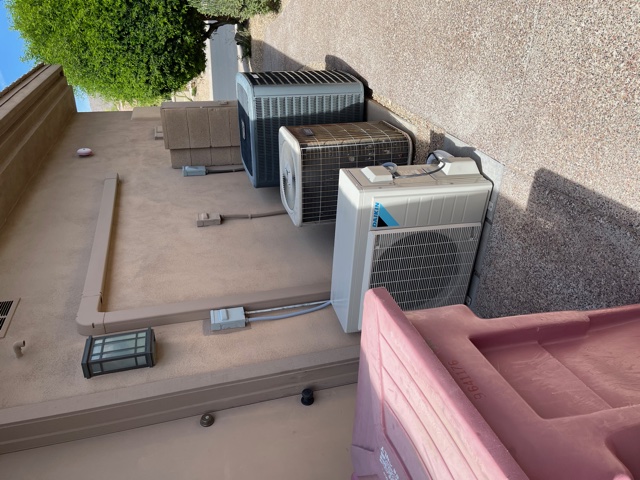
The finished outside installation. Two 4 ton ducted home units are in the back.
The new casing has been painted to match. The exhaust fan of the ductless compressor
is faced away from the center ducted unit. Blowing hot air into those fins
is not a good idea. The compressor sits on added cement plates. The
proximate on/off switch on the wall is required by AZ code.
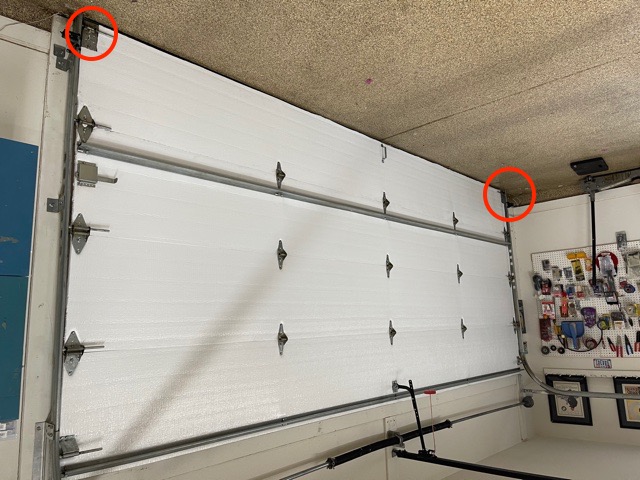
Completed insulation on the double door. The single door gets like treatment.
I used this product from Amazon. $200 for both doors. Never remove
the bottom plates, circled. These retain the tension cables for the lifting mechanism.
Reckon on 60-90 minutes to insulate each horizontal panel.
Some added thoughts.
The garage door insulation is attached to the ribs of the doors using double sided tape. Your ribs must be scrupulously cleaned first, for proper adhesion. I used isopropyl alcohol. Additional bonding is provided by removal of the hinges/locks/handles/drive attachments by removing these when installing the insulation. Once replaced these help keep it in place. The rear of the insulation is silvered and leaves an insulating air space to the inside of the door. That’s good for energy efficiency. The material adds little weight, though I had to tweak the ‘down’ torque limiter on the motor box a couple of turns to prevent the door reversing. The small incremental load was causing the logic mechanism to think it was encountering an obstacle, causing reversing at the limit of its travel.
My son helped me with this installation as removal and replacement of the long cross braces on the double door is a bear. As the locating holes for the screws can no longer be seen once the insulating material is in place, you need to do some careful measuring to know where they are.
Noise levels? Here are the manufacturer’s specifications:
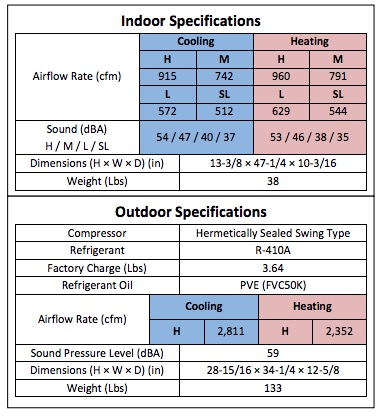
Noise levels are commendably low.
The electronics in the evaporator have an option to swing the baffles back and forth. I find that to be an irritant and have them set to stationary. There’s a button on the remote for a 15 minute ‘turbo boost’ of the a/c in the event a door is opened to move a car (or motorcycle!). Further, the electric eye on the evaporator senses motion, slightly accelerating the fan when you are working in the garage. All told, there is a good deal of programmability. Nice.
Theoretical incremental energy cost:
My electricity use for the home in the warmest summer months costs $480 per month. $360 of that is for a/c, comparing summer bills with winter bills. Winter electricity use is for the kitchen oven and lighting/appliances only. The home is heated by gas. These are AZ rates. If you are in TX, reckon one half of these amounts. If in MA, NY or CA, double them.
The volume of the garage is 32% of the home.
Therefore, I conclude that the incremental electricity cost for the garage air conditioning system will be:
$360 x 32% = $115, assuming the garage is maintained at 76F, the same as the home.
An alternative approach is to compare the tonnages of the garage a/c versus that of the home system. Those are 3 tons and 2 x 4 tons, respectively. Thus, you would expect the ductless system to consume 37.5% (3/8) of the energy used by the home system, which gives an incremental energy cost of $360 x 37.5%, or $135/month. A similar result.
Whatever it turns out to be, it’s going to be a whole lot cheaper than lying on the loony doctor’s couch. I find wrenching to be far more of a salve for what is between my ears.
Actual incremental energy cost – update August 29, 2021:
With four months’ bills on hand, the incremental average monthly cost has been $132. Daily highs have been in the range 90-117F. For the summer of 2022 I will program the unit to allow 90F overnight, which should see some modest savings.
The highest daytime temperature recorded so far this summer is 117F and the system had no issues with maintaining all areas of the garage at 80F.
Here’s the garage door outside (116F ambient) and inside:
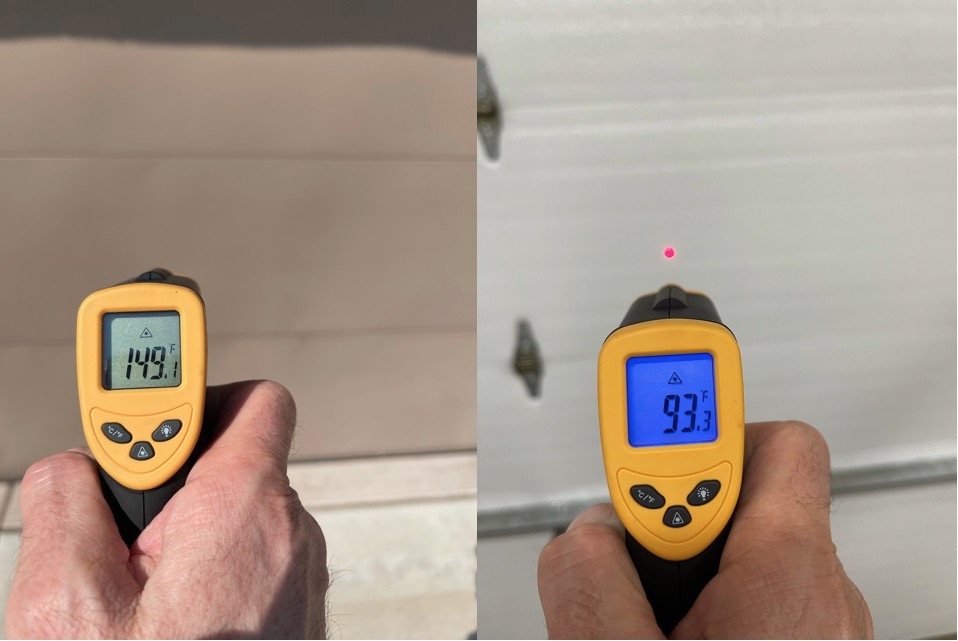
The inside door insulation, courtesy of NASA, is a winner.
The evaporator (the unit inside) has three removable air filters under the decorative flap. The maker says these should be removed and flushed with water monthly. My setting has very low airborne dust and I have found that a quarterly cleaning frequency is fine. It took me a couple of minutes to do. At the same time I also hosed the fins on the compressor (the outside unit) with a water to clear detritus and maintain optimal ‘breathing’ of the unit.
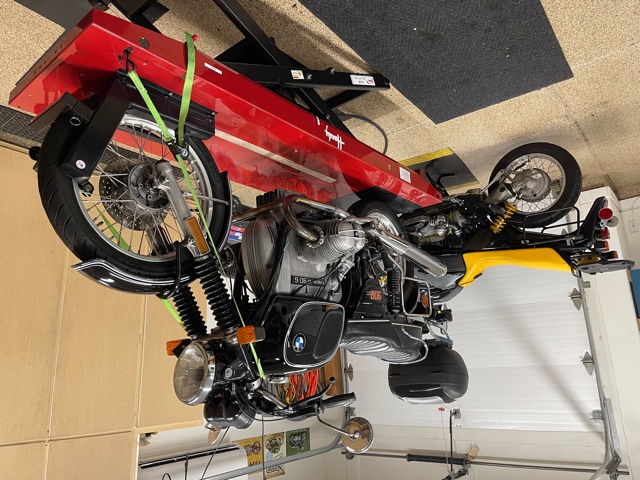
1975 BMW R90/6 on the lift and the 1992 R100GS PD in back.
It’s a toasty 117F outside, wrenching heaven inside.
iPhone 12 Pro Max images.